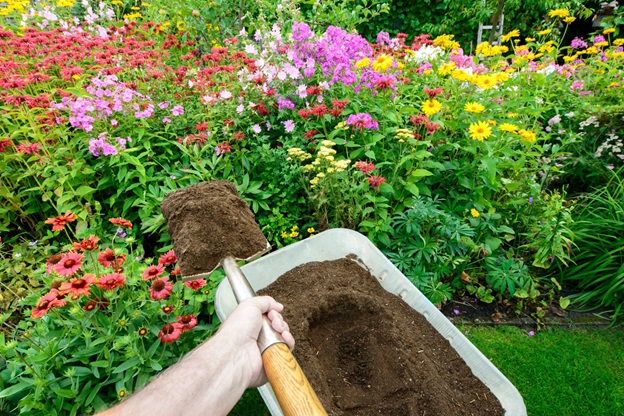No matter whether you’re an experienced landscaper looking for the best soil to aid the growth of outdoor flowers, plants and vegetables, or you’re simply a novice gardener wanting to improve the quality of your lawn, topsoil may be exactly what you need. However, what are the best ways of utilising this unsung horticultural hero?
While applying topsoil to flower beds, lawns and borders may sound relatively straightforward, the truth is, to achieve the best results, there is actually some technique to spreading this landscaping staple. With this in mind, we’ve put together a selection of top tips, answering everything from when topsoil should actually be used to how to apply it. Read on for all you need to know.
When to use topsoil
As we explain in our blog about topsoil and its uses, topsoil is made up of tiny pieces of rock mixed with organic matter, including dead vegetation and leaves, meaning it is packed with nutrients. For this reason, it is commonly used to support the growth of plants and lawns, and to improve drainage and irrigation. With this in mind, whether you are applying topsoil to a damaged lawn or a new flower bed, this work should be undertaken prior to the beginning of the growing season at the start of spring.
Spreading topsoil during winter, when plants are in the dormant phase, can increase your risk of damaging or even killing your plants, while leaving it too late and applying it during the summer can mean your plants or lawn do not feel the full nutritional benefits when they need them most. The start of the growing season is signalled by the last frost of winter. Depending where you live in the UK, this will typically fall somewhere between the middle of March and the end of April.
How to apply topsoil over an existing lawn
One of the most common uses of topsoil is ‘topdressing’. This is where you add a layer of topsoil to your existing lawn with the aim of improving growth and enhancing its look. Once you have selected the type of topsoil you want to use on your lawn and calculated how much you will need, it’s time to actually apply it. To do this, follow the simple step-by-step instructions below.
- Choosing a dry day to carry out this work, mow your entire lawn.
- Portion your topsoil into small batches and then, using a trowel or small plant pot, place each batch evenly around the lawn. This should mean you have a small pile of soil that resembles a small molehill every few metres.
- Spread each pile of topsoil over its small designated area using a spade and then use the back of a rake to push and pull the soil into position. Ideally, the layer of topsoil should be no more than a couple of centimetres deep and should allow for the tips of each blade of grass to visibly poke through.
- Using a levelling lute or a stiff-bristled brush, work the topsoil into any areas of grass that contain dips or small holes. This may not need to be done on flat areas, however, uneven patches will need brushing until the entire surface area of the lawn is covered. Although this can be slow work, especially if the surface of your lawn is particularly uneven or damaged, it needs to be done right. If you fail to work the topsoil into each dip, nook and cranny of your lawn, you could be running the risk of actually making your lawn bumpier rather than more level.
- Once you have ensured there are no obvious clumps of topsoil that need to be spread, or any areas you have failed to cover, the last thing you need to do is water your lawn. It’s important to continue to water your lawn daily for a few weeks, especially during spells of dry weather, and to not mow your lawn for at least a week after initial application.
Can topsoil be used for planting?
Yes, topsoil can be used for planting, but it is not always the best option. When it comes to existing flower beds, vegetable patches and borders, adding a layer of topsoil at the start of growing season is a great way to refresh the soil and inject a range of nutrient-rich growing materials. It can also be mixed with regular potting soils to make those more nutrient-rich, as long as you use equal parts potting soil and topsoil.
However, as a rule, when it comes to potted plants, including when propagating outdoor plants in pots, regular garden soil or compost tend to be better options. This is because topsoil can contain fungi and other organic elements that can damage young potted plants.
Whether you’re looking for bulk bags of premium topsoil to improve the health of your lawn or vegetable patch, or you are after compost for your new potting plants, be sure to check out Ningbo’s range of high quality bulk landscaping products.





